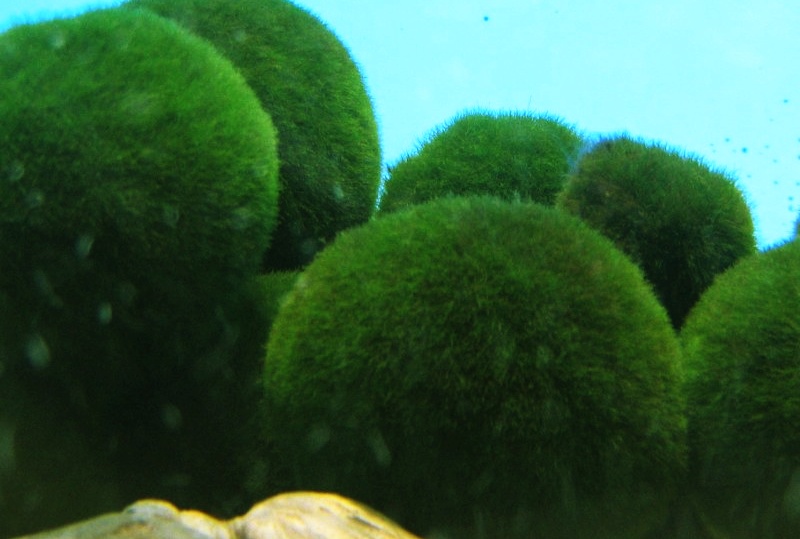Guide
Hornwort (Ceratophyllum): A popular plant in the Triops aquarium
Hornwort, scientifically known as Ceratophyllum, enjoys great popularity as an aquarium plant due to its unique shape and dense green leaves. It is a plant that can either float freely in the water or grow attached to objects such as stones. As an aquatic plant, hornwort plays an important role in the aquarium. It contributes to water purification by absorbing excess nutrients while providing an adequate oxygen supply. It also creates a natural environment for fish and other aquarium inhabitants. Caring for hornwort is straightforward as it requires little light and nutrients. In this blog post you will learn what other advantages the plant offers in the Triops aquarium.

These plants are also very suitable for your aquarium
Before we look at hornwort, I would like to introduce you to three other plants that are very popular in the Triops aquarium. Water plant, water friend and moss ball are three popular plants that offer numerous benefits for an aquarium.
Waterweed, scientifically known as Elodea, is a fast-growing plant with long stems and dense leaves. It contributes significantly to water quality by absorbing excess nutrients such as ammonium and nitrate, which can promote the growth of algae. Due to its rapid reproduction, it helps maintain the biological balance in the aquarium and promotes a healthy ecosystem.
The water friend, also known as Hygrophila, is a versatile aquarium plant with attractive green leaves. In addition to enriching the aesthetic design of the aquarium, hygrophila offers numerous advantages. It contributes to the oxygenation of the water and absorbs carbon dioxide, which is very important for an optimal balance in the aquarium. In addition, it offers the inhabitants of the aquarium protection and retreat possibilities, which gives them a feeling of security.
The moss ball, also known as Cladophora ball or Marimo moss ball, is a unique plant that grows in the shape of a round ball. It is particularly attractive and adds an interesting visual dimension to the aquarium. The moss ball also has functional benefits. It helps to filter the water by absorbing pollutants and reducing excess nutrients. In addition, it provides a protected habitat for the aquarium’s inhabitants and can even serve as a natural spawning ground for certain fish species.
In summary, water plant, water friend and moss ball offer a variety of benefits for an aquarium. They improve water quality, promote oxygenation, provide shelter and refuge for the inhabitants and contribute to the aesthetic design. The care of these plants is usually uncomplicated and they are a valuable addition to any aquarist who wants to create a healthy and appealing aquarium.

Hornwort is easy to care for and reduces the risk of algal blooms
One of the main benefits of hornwort is its ability to contribute to water purification. It absorbs excess nutrients such as ammonium, nitrate and phosphate, which can promote algae growth. By removing these nutrients from the water, hornwort helps maintain the biological balance in the aquarium and reduces the risk of algal blooms. A healthy water condition is of great importance for the well-being of the fish and other inhabitants of the aquarium.
In addition, hornwort plays an important role in oxygenating the water. Through the process of photosynthesis, it releases oxygen and thus increases the oxygen content in the aquarium. This is especially important for fish, which need a sufficient oxygen supply to stay healthy. Hornwort can thus help to create an optimal environment for the aquarium inhabitants.
Another advantage of hornwort is its versatility in the aquarium. The stem-like stems with the green, dense leaves provide shelter and retreat for the fish. They can also serve as a spawning substrate by providing a suitable place for the fish to spawn and lay their eggs. Hornwort thus creates a natural environment and contributes to the well-being of the aquarium inhabitants.
Hornwort is comparatively easy to care for. It does not require much light or nutrients, making it an ideal choice for beginners and aquariums with low lighting. It can float freely in the water as well as be attached to objects such as stones or roots, making it flexible and adaptable.
- Palaeontology: Mammal ancestor with sabre teeth discovered on Mallorca - 21. December 2024
- Yps magazines and the cult gimmicks: How the prehistoric crabs conquered the world - 20. December 2024
- Palaeontology: Species of pterosaur discovered in Argentina - 18. December 2024